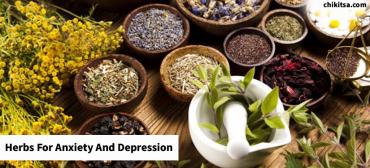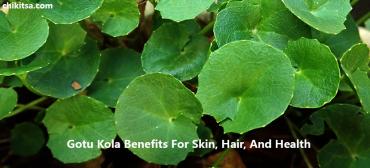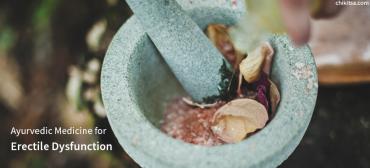Ayurvedic Orientation

Our corporeal body defined as Kaya, Shareer and Deha in Ayurveda. It needs a special mention here that around twenty centuries B.C., the knowledge of anabolic and catabolic activities and their role in balancing health had come to the notice of ancient Indian physicians. It is clear from the fact that, in different contexts, the physical body is termed in different terms such as Kaya, Shareer or Deha. If we go deep into the etymological origin of these words, following facts come to our notice:
| Kaya | Chi / Chayane (Accumulating or multiplying continuously) | Anabolic activity |
| Shareer | Shru /Himsane(Getting destroyed or shedding out continuously) | Catabolic activity |
| Deha | Dhi / Vardhane(Growing or developing continuously,a sign of life | Harmony in Anabolism and Catabolism |
Our body is said to be made up of six parts “Shadanga†(Shad = Six, anga = parts). They are Head, extremities and the middle part consisting of chest and abdomen. While the head is the controller of all our activities and thinking, the middle part plays an important role in performing vital functions such as respiration, digestion, metabolism and excretion, the extremities perform physical activities and take part in locomotion.The smaller parts of our body are referred to as Pratyanga.
Meaning of Ayurveda
Etymologically, the word Ayurveda is made up of two basic terms viz., ‘Ayu’ and ‘Veda’ wherein ‘Ayu’ stands for life and ‘Veda’ means science or knowledge: thus Ayurveda means `the science of life’.
To elaborate further, `Ayu’ means not only alive body system but it is an active assembly of corporeal body (Shareer), Sensomotor organs (Indriyas), Mind (Mana) and Soul (Aatma). Ayu or the life is supposed to originate right at the time of fertilization of ovum (Shonit) by the sperm (Shukra) during which time soul (Aatma) gets attached to it. The life ends when this omnipotent Aatma departs from it. The life span of an average human being is acclaimedto be of around hundred years.It is depending on many extrinsic and intrinsic factors governing health (Swasthya).
Ayurveda looks not only into the physical aspect of life but it also goes deep into its humane aspect also. While defining the life (Ayu), AcharyaCharak, mentions that the science, in which the parameters which are beneficial (Hita), harmful (Ahita), pleasurable (Sukh), or unpleasurable (Dukha) for life are described, is ‘Ayurveda’.The life therefore is a fleeting, mortal congregation of physical body, mind and soul, i.e. the physical as well as metaphysical components. The fusion of physically indistinct non-material components such as mind (Mana) and soul (Aatma), initiates the process of living.
As long as the components of soul and mind (Jeevatma) are intact, the biological forms of the material elements present in our body keep on functioning actively and keep us alive; but no sooner the Jeevatma departs, the biological materials start disintegrating. This state is Mrityu (death). That is the reason; the life is termed as the fusion of physical body, senso-motor organs, mind and soul.
The physical part of body is a combination of biological components such as Omnipresent vital catalysts (Doshas), Tissues / humoral components (Dhatus); Chemicals / Bio-transformers (Agnis) and Waste components (Malas). The metaphysical part consists of mind, soul and subtle elemental factors (Tanmatras) Theseare naturally implanted in the sensory organs so as to provide us the faculties of hearing, touch, vision, taste and smell. Health or Swasthya is defined When all the above factors act in harmony and a state of disharmony or chaos is known as disease (Roga).
Ayurveda says that the forces we see predominating the external world predominate our internal milieu also. The living body is nothing but a mini universe in itself. According to the established theories mentioned in philosophies, the completely material world is made-up of five basic elements. viz. Aakash, Vayu, Teja, Apa and Prithvi. This is comparable with ethereal, gaseous, energy, fluid and earthen masses respectively which are material in nature and also, non-material Soul (Aatma), Mind (Mana), Time(Kaal) Space (Disha). While different permutations and combinations of these elements without any life-force lead to the formation of inanimate materials or minerals or metals, their congregation, coupled with the life force, give birth to the animate world, which could be of higher level. Animal Kingdom known as Bahirantashchetana. This is a lower level. Plant Kingdom is known as Antashchetana.
The biological components mentioned above, viz., Doshas (vital catalysts), Dhatus (tissue / humoral components), Agnis (biochemical transformers) and Malas (waste materials) are nothing but the biological forms of the five basic elements only.
During embryological development and further on, the Doshas and Dhatus get amalgamated in genetically coded proportions and form / constitute various physical organs such as heart, liver, stomach, etc.
The science of Ayurveda has also elaborated on certain special Sanskrit terms for different structures in the body.These terms are self-explanatory in themselves. A brief review of the important ones is mentioned here under:
Doshas (Vital Catalysts)
The Doshas (vital catalysts) are the most important constituents as they catalyse and/or carry out all vital functions in their normalcy, and initiate the disease process in states of disequilibrium / vitiation.
Dhatus (Tissue Components)
Dhatus are the tissue-humoral systems of the body. They are in a fixed sequence. In different permutations and combinations, the Dhatus form various physical organs of the body according to the genetically coded informations. They are seven in number. Their comparison with modern terminology may be as follows: Rasa ( Plasma and Lymph); Rakta (Blood cells); Mamsa (Muscle tissue); Meda (Adipose tissue); Asthi (Bone tissue); Majja (Marrow tissue); Shukra (Tissue and humoral components related to reproductive / anabolic functions










